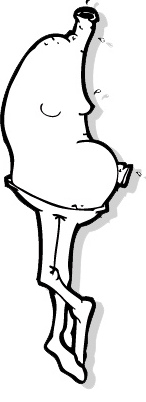Two New Books
Tuesday, 5 February 2008 by Dr Maytel
First up the more easily digested:
'A Short History of the American Stomach' by Frederick Kaufman
Main Course of extremely stodgy text to chew on:
'The Future Control of Food: A Guide to International Negotiations and Rules on Intellectual Property, Biodiversity and Food Security' by Geoff Tansey and Tasmin Rajotte
'A Short History of the American Stomach' by Frederick Kaufman
"A Short History of the American Stomach" is a history of extremes. In Kaufman's version, there isn't a lot of middle ground. When we're not furiously trying to shed pounds, we're gorging ourselves. In one of his more amusing sections, he looks at the phenomenon of extreme eating. "Professional gurgitators," those champion hot-dog eaters you read about every summer, come from a fine, if bloated, lineage; extreme eating is a classic American folk tradition. This voraciousness, frowned on in polite company, symbolizes the bounty of fish, flesh and fowl that the settlers consumed as they settled America. Kaufman evokes those colorful backwoods characters "who devoured alligators and rattlesnakes and blood." The American appetite is perhaps key to our westward expansion, "for America was a vast digestive force that understood the entire continent -- if not the world -- as its manifest dinner."
Main Course of extremely stodgy text to chew on:
'The Future Control of Food: A Guide to International Negotiations and Rules on Intellectual Property, Biodiversity and Food Security' by Geoff Tansey and Tasmin Rajotte
This book is the first wide-ranging guide to the key issues of intellectual property and ownership, genetics, biodiversity and food security. Proceeding from an introduction and overview of the issues, comprehensive chapters cover negotiations and instruments in the World Trade Organization, Convention on Biological Diversity, UN Food and Agriculture Organization, World Intellectual Property Organization, the International Union for the Protection of New Varieties of Plants and various other international bodies. The final part discusses the responses of civil society groups to the changing global rules, how these changes affect the direction of research and development, the nature of global negotiation processes and various alternative futures.
